How to measure flour correctly in cup measurements. Avoid over measuring by up to 30% or more for perfect baking.
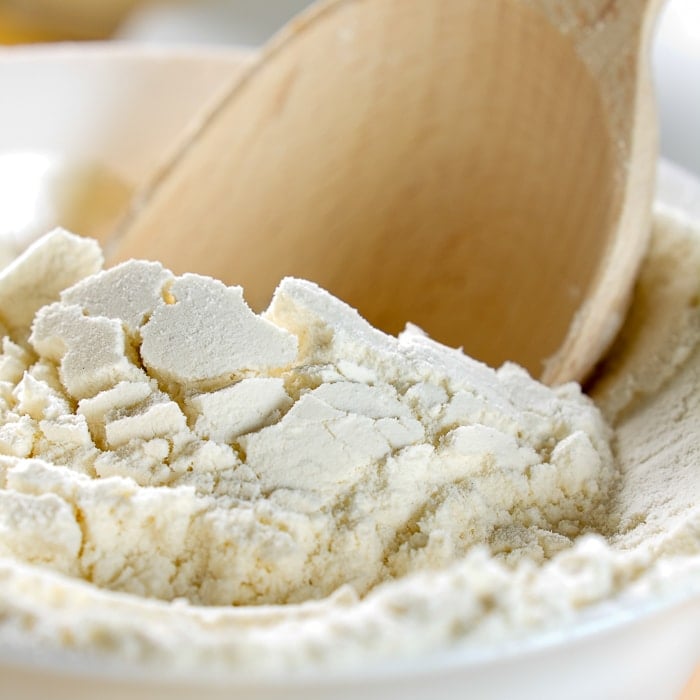
How to Measure Flour Correctly, for perfect baking results.
Perhaps nothing in baking is more important than measuring the flour correctly and precisely. Many baking pitfalls start right there.
One of the most common comments I get from readers who try bread recipes in particular, is that the dough is too dry or didn’t rise enough or too slowly in the proofing stage. The reason is often over measuring the flour.
When I recently posted an incredibly easy way to make No Knead Bread, the questions and comments came again. I decided it was time to talk about best practices when it comes to measuring this most common baking ingredient.
The difference is real.
Cooking is different than baking. Many non-baking recipes have a little wiggle room to make adjustments. A little more of this, less of that, or even sometimes leave an ingredient out altogether, many recipes can be quite forgiving.
Baking is not like that.
Baking is precise, but our North American volume/cup measurements often are not. Many of our followers from the UK, Europe and other parts of the world, weigh all of the ingredients in baking, which is far more precise and leaves little room for error.
Why we did not follow along with that system here in North America confounds me. It confounds our readers outside North America as well, as I have heard from them many times over the years of writing this blog.
How to measure flour correctly is important.
Why is measuring method important? The photo below demonstrates how wildly different the weights of a cup of flour can be.
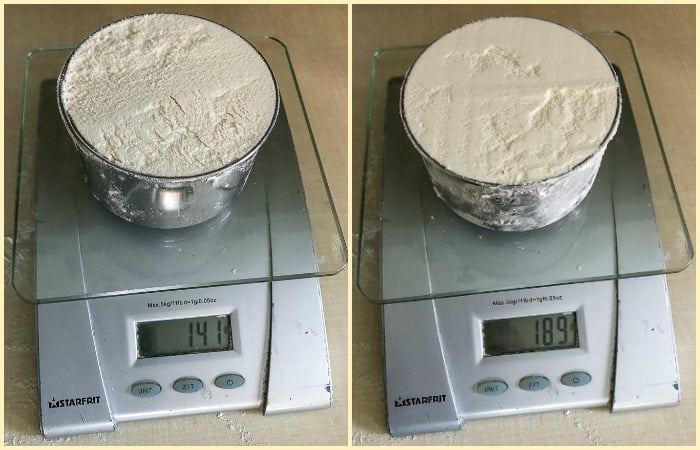
How you measure flour is important. It can result in mis-measurement of up to 34%.
The cup of flour on the right was scooped directly out of the bag or flour container and levelled with the back of a knife. The cup of flour on the left was spooned into the cup and then levelled with the back of a knife.
The difference in weight is actually 34%. So if you are measuring flour by scooping it, you are compressing in the flour in the cup.
This is often compounded by many who press the top of the measuring cup against the bag or container they are scooping it from. Yes, that can make the process a little less messy, but you may be adding up to 1/3 more flour than the recipe actually calls for.
This can cause bread to be drier, cakes to be denser, biscuits to be less flaky, and cookies too brittle. If you have a scale, measure a proper cup of flour and it should be 140 grams give or take a gram or too.
The right technique.
The proper technique is to spoon the flour into the cup until it is overflowing, then run the back of a knife across the top to level it. This will result in perfectly measured flour every time.
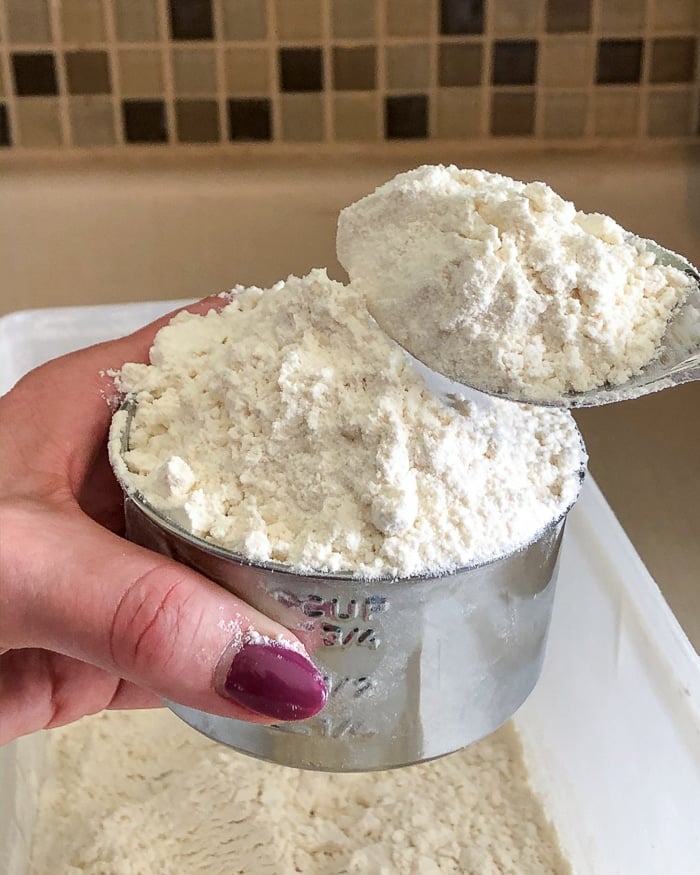
Spooning flour into measuring cup
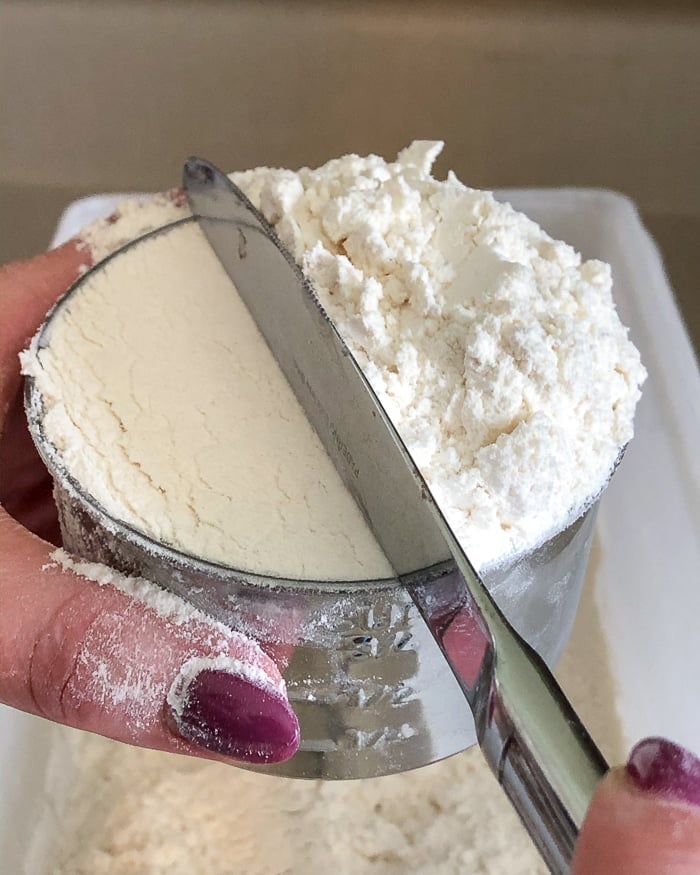
Levelling the flour with the back of a butter knife.
One online resource , to which I often refer our friends outside North America, is a conversion guide from Cooks Illustrated online. They have some common baking ingredients converted from cups to grams, which is very useful to bakers overseas.
Find that conversion guide here.
If you’re now in the mood to try some bread making for yourself, we also have great recipes for Honey Oat Bran Bread and some quick, super easy, versatile, Two Ingredient Flatbreads.
Of course our most popular bread recipe ever is my decades old recipe for the Best Homemade White Bread. That recipe has received many, many rave reviews over the years.
Many folks have told me it is the recipe that succeeded for them when others had failed. Be sure to give that one a try too.
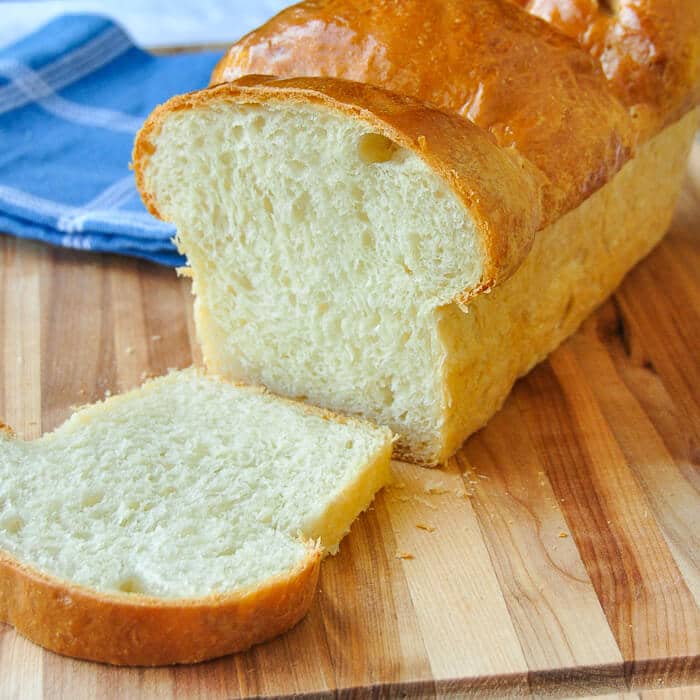
The Best Homemade White Bread
You can also sign up for our FREE newsletter to know immediately when we add new recipes. You’ll also get weekly suggestions for great family friendly meals and desserts too!
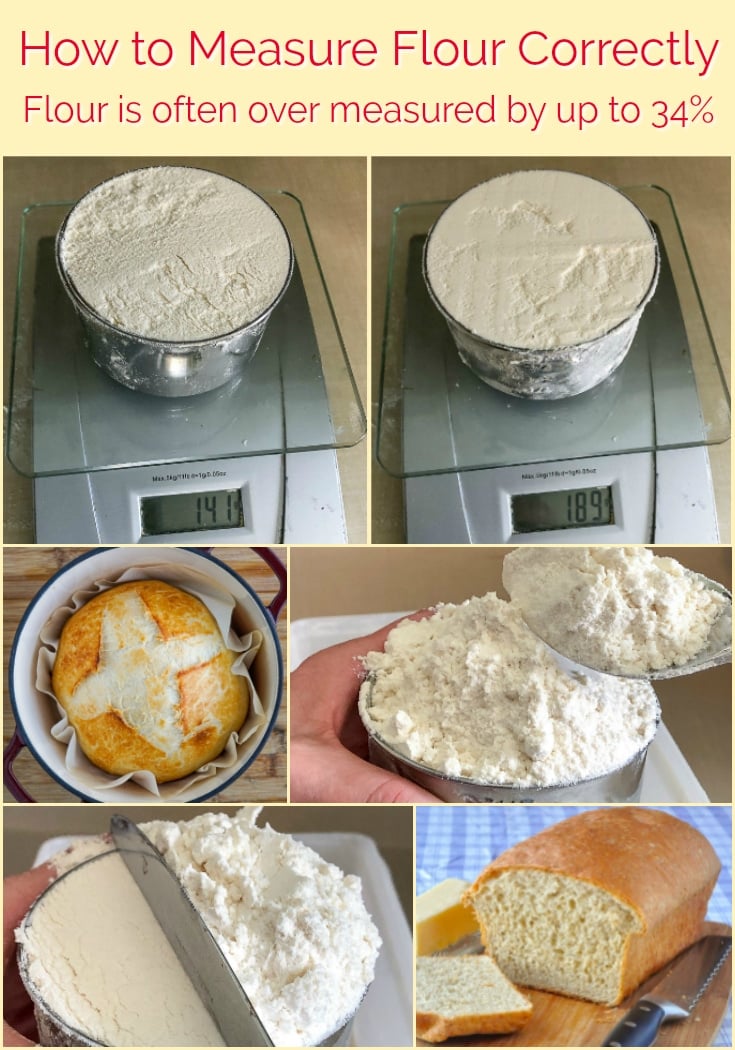

Rock Recipes a participant in the Amazon Services LLC Associates Program, an affiliate advertising program designed to provide a means for us to earn fees by linking to Amazon.com and affiliated sites. Our product recommendations are almost exclusively for those we currently use or have used in the past.
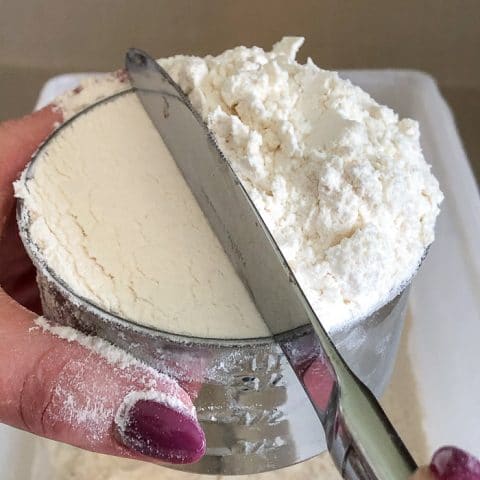
How to Measure Flour Correctly
Materials
- Flour
Tools
- Measuring cup set
- Tablespoon
- Butter knife
Instructions
Spoon the flour into the appropriate size measuring cup.
The flour should overflow the rim of the measuring cup.

Run the back of the butterknife over the top of the cup to level the flour.
Use as directed in the recipe.


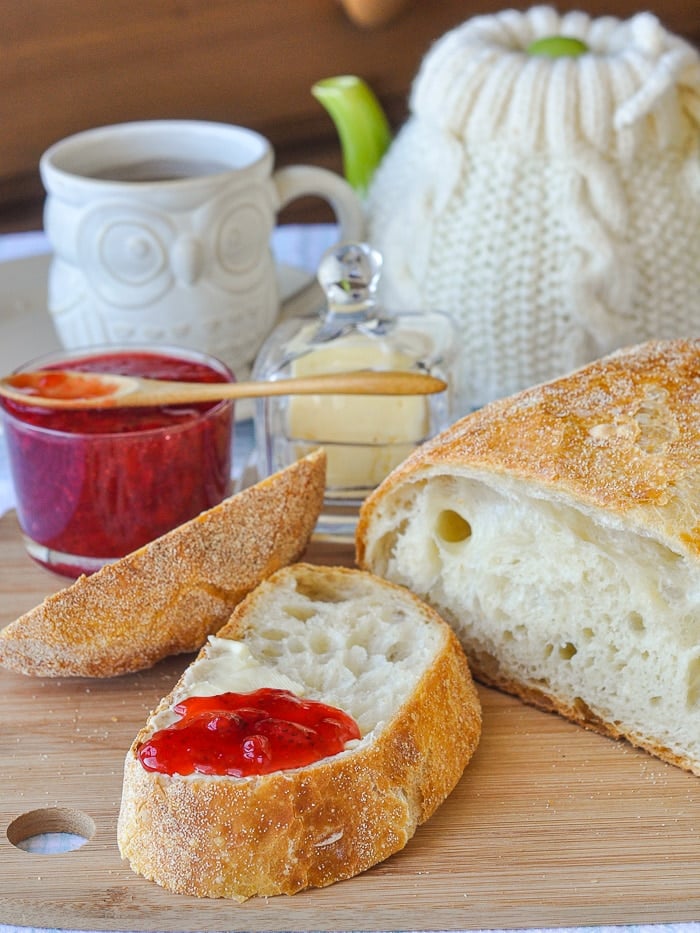
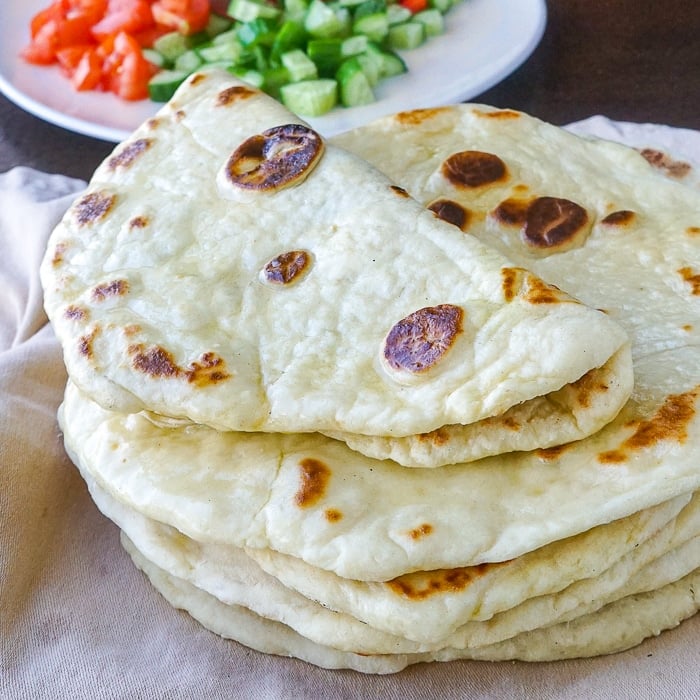
Marian
Monday 20th of February 2023
Please consider using weight instead of volume in your recipes. Thank you.
Carolyn
Sunday 29th of March 2020
I started measuring flour like this a few years ago. It really does make a difference. Thanks for the great article!